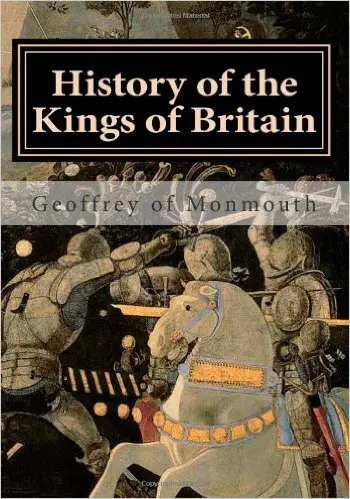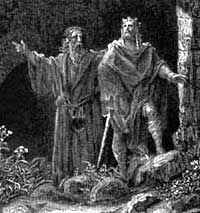King Arthur: Birth of a Legend Part 4: Arthur the Superstar
Published in 1136, The History of the Kings of Britain gives us many details about Arthur. Geoffrey names him king and places him within the ranks of other kings of Britain, starting with Brutus, for whom the island and its people were named. Geoffrey mentions other historical people as well, including Ambrosius Aurelianus and Uther. But it is the inclusion of Arthur, and of the many details first found published in Geoffrey's book, for which Geoffrey is most famous. Geoffrey was writing several centuries after Arthur is thought to have lived, so Geoffrey's book is definitely not first-person. By this time, the legends associated with Arthur have had time to grow and spread.
Many details in the stories that Geoffrey puts to paper survive in the stories of Arthur written by other authors down through the years. They are stories of Merlin and magic, of great secrets and great enemies. They are fancy and not necessarily historical details. It is in Geoffrey of Monmouth that the idea of a final cataclysmic battle between Arthur and a prime antagonist named Mordred (or similar), who may or not be related to Arthur, is fully realized. The story of this battle also appears in stories from authors in Wales and France. And it is also in Geoffrey of Monmouth that the idea of an Arthur who does not die is fully realized as well. The legends of Arthur often refer to him as the "Once and Future King." As Geoffrey tells it, Arthur dispatches Mordred in the final battle but is himself mortally wounded; Arthur is then saved from a battlefield death by the timely arrival of a group of female healers, who spirit Arthur away to the fabled Island of Avalon, from which he will return in another great hour of need. As did Nennius, Geoffrey includes mentions of people and events that can be verified from other sources; many scholars have pointed to this, again, as something to build on in a pursuit of a historical Arthur. As with Badon Hill, however, a location for the (final) Battle of Camlann has not been conclusively identified. Part 5: The Making of a Legend |
|

 The one medieval author who has been given the most credit for launching the career of Arthur into the public consciousness is Geoffrey of Monmouth. He was born in the early 12th Century, in or near Monmouth. He may have been a monk at Monmouth Priory, but he was definitely a monk. Geoffrey liked to write, and he turned his quill to fancy when he was in his 30s. He is most famous for three works: The Life of Merlin, The Prophecies of Merlin, and The History of the Kings of Britain. The last one is his most famous (and, actually, incorporates The Prophecies of Merlin, which was published on its own a bit earlier).
The one medieval author who has been given the most credit for launching the career of Arthur into the public consciousness is Geoffrey of Monmouth. He was born in the early 12th Century, in or near Monmouth. He may have been a monk at Monmouth Priory, but he was definitely a monk. Geoffrey liked to write, and he turned his quill to fancy when he was in his 30s. He is most famous for three works: The Life of Merlin, The Prophecies of Merlin, and The History of the Kings of Britain. The last one is his most famous (and, actually, incorporates The Prophecies of Merlin, which was published on its own a bit earlier).  Geoffrey's writings are dotted with fancy. Merlin, whom Geoffrey names as Arthur's chief advisor, spouts wild prophecies and has special powers. The battles that Arthur and Uther and others fight involve armies numbering in the hundreds of thousands (which would have been the largest numbers assembled for a battle in those days). Arthur has a special sword, that he either got from a magical priestess or pulled out of a stone block (or both).
Geoffrey's writings are dotted with fancy. Merlin, whom Geoffrey names as Arthur's chief advisor, spouts wild prophecies and has special powers. The battles that Arthur and Uther and others fight involve armies numbering in the hundreds of thousands (which would have been the largest numbers assembled for a battle in those days). Arthur has a special sword, that he either got from a magical priestess or pulled out of a stone block (or both). 
